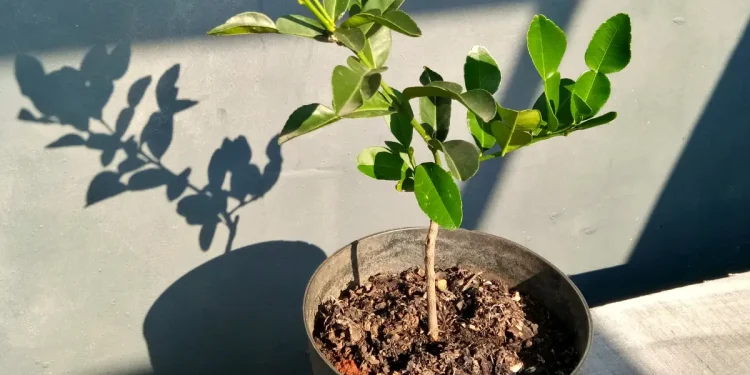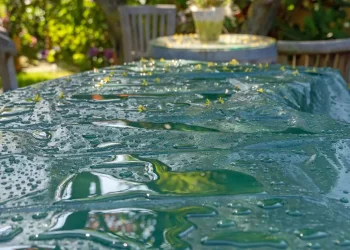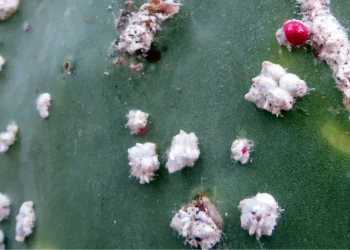During times of flu and other infections, a lot of us reach for the lemons and other citruses. The Kaffir lime tree is especially valued in Asian cuisine, and Kaffir Limes are not always easy to find.
The tree is also valued for its leaves which are highly aromatic, emitting an intense citrus fregnance.
If you want to add more variety to your garden, the tree can be propagated by seeds or by cuttings. In this article, we will focus on the latter method.
Advantages of Growing Kaffir Lime from Cuttings over from Seeds
Growing Kaffir Lime trees from cuttings rather than seeds offers several practical advantages. Firstly, it significantly accelerates the process, as cuttings tend to establish roots and grow into robust plants more rapidly than their seed counterparts.
Although the tree will still take years before it bears fruits, you don’t have to guess whether or not will your seeds propagate successfully.
Moreover, by choosing the cutting method, you ensure that the new plant retains the desired characteristics of the parent tree, such as fragrance and flavor. This method also minimizes variability, providing a more predictable outcome in terms of leaf quality and tree growth.
Overall, I can highly recommend opting for cuttings. Take your time and select a good-looking one at your local gardening store, and success is almost guaranteed.
Steps to Grow Kaffir Lime Tree from Cutting
To cultivate a flourishing Kaffir Lime tree from a cutting, begin by selecting a healthy and disease-free branch from the parent tree, ideally one with a mature appearance and vibrant foliage.
Once you’ve secured your cutting, proceed with preparation by trimming it to a manageable size and removing excess leaves.
The next crucial step involves the application of rooting hormone, a key element in stimulating root development. Subsequently, plant the treated cutting in a well-draining potting mix and provide optimal conditions for growth. Adequate moisture, warmth, and indirect sunlight are essential to nurture the cutting into a self-sufficient, thriving Kaffir Lime tree. Now, let’s break down each of these steps to guide you through the process in detail.
1. Taking the Cutting
Ideally, choose to start the process in the late spring or early summer. Select a healthy steam from the parent tree or producer. The stem should be around 4 inches (10 centimeters) in length and feature mature leaves but no flowers or fruits.
Using sharp, clean pruning shears, make a clean cut at a 45-degree angle. This angle promotes optimal water absorption and minimizes the risk of diseases. Take care to avoid tearing or damaging the bark, as a pristine cutting sets the foundation for successful propagation.
2. Prepare the Cutting
With your selected cutting in hand, the next crucial step is preparation to ensure its successful transition into a thriving Kaffir Lime tree.
Remove excess leaves, particularly those toward the lower part of the cutting. Leave only two to three leaves in the upper part. This will reduce moisture loss—a plant without roots can very easily dry out and ensure that cutting’s energy is used towards root development.
Also, take a moment to inspect the cutting for any damaged or diseased sections and, if necessary, trim them away.
For an extra boost, consider applying a rooting hormone to the freshly cut end of the stem. It is totally optional, but as the name suggests, it will help with the development of roots.
3. Choose and Prepare the Rooting Medium
Opt for a balanced potting mix that won’t hold much moisture but also won’t be very fast at draining as is, for instance, cactus mix. Any standard potting soil should do; alternatively, you can opt for sand.
Fill a small pot with the chosen medium and poke a hole in the middle. It should be deep enough to accommodate the cutting without bending or damaging it.
Prior to planting, water the soil or sand to make it thoroughly moist but not soggy.
4. Plant the Kaffir Lime Cutting
Gently insert the prepared cutting into the hole, making sure that at least two nodes (the points where leaves were removed) are beneath the surface. This encourages the development of roots from these nodes.
If the stem was not grown in this way, which would allow it to have two nodes covered by the soil, don't worry. It should still grow healthy roots from the bottom.
Lightly press the soil around the cutting to provide stability and water the cutting a bit more.
5. Caring for the Cutting
Place the container in an area with indirect sunlight, avoiding harsh, direct rays that could stress the young cutting.
The key to success is maintaining consistent moisture. As I already emphasized, a plant without roots can easily dry out. The stem itself is able to absorb moisture, but not as effectively as roots.
Make sure to keep the soil damp but not waterlogged.
The air around the cutting should also be moist. The easiest way to achieve this is to cover the plant with a clear plastic bag and, to prevent overheating, cut a few ventilation holes.
6. Transplanting
As your Kaffir Lime cutting matures and establishes a robust root system, the time will come to consider transplanting it to a larger, permanent home.
This stage should take approximately 2 to 3 months. Give the plant a gentle tug. If the roots are big and mature enough, they will hold the plant in place.
At this point, gradually expose the young tree to longer periods of sunlight. When it’s able to stay outdoors all day, you can choose a place in your garden and plant it there.











